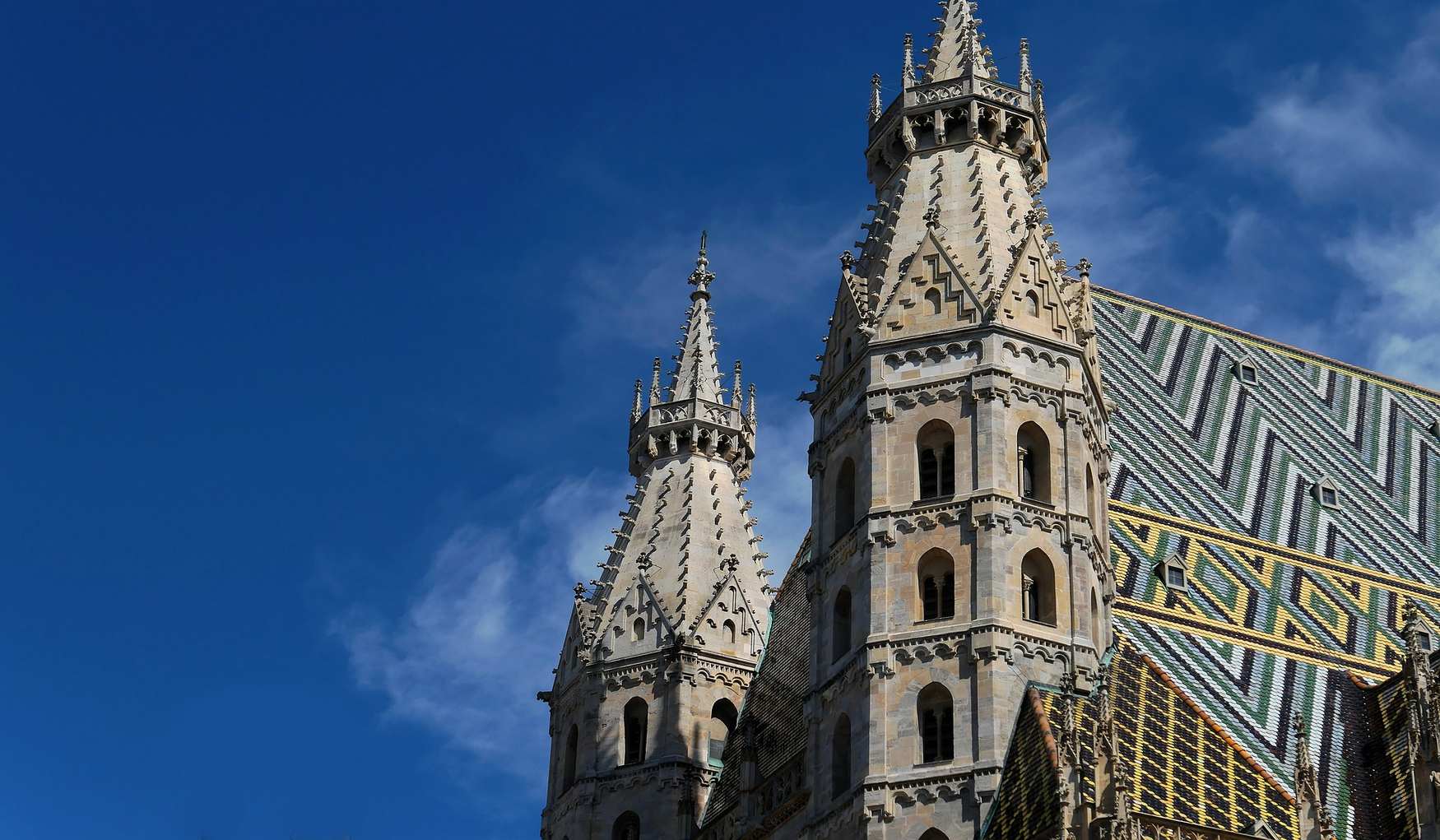To visit Austria without visiting one of its most important and revered symbols, St Stephen's Cathedral in Vienna, is a serious omission on the part of the tourist. Many people make it a point to visit Austria's national shrine with their children, to see the main thing and the walls of the ancient temple that is more than eight centuries old.
The Kiddpassage will help you do just that. What is St Stephen's Cathedral in Vienna today? Well, it's a massive, imposing structure that sets off the rest of the city's architectural ensemble with its majestic, understated beauty.
The church is almost 200 metres long, 62 metres wide and 136 metres high. To this day, 23 ancient bells beneath its vaulted ceiling chime at certain hours — amazing soul music!
The church is located in St Stephen's Square (Stephansplatz). It is also known as St Stephen's Cathedral. The exterior of the Vienna Cathedral is breathtaking. Its façade is rather unassuming, lined with hewn stone and decorated with masks and sculptures.
The most picturesque portals of the temple are continuous ornamentation in which you can see strange birds, fantastic plants, fabulous monsters and people. Tourists who have visited Vienna's main cathedral confirm that there is indeed something to see and marvel at.
The church houses a part of the relics of the world famous patron saint of lovers, St Valentine. Many couples from all over the world come here to kneel before the saint as a sign of deep respect.
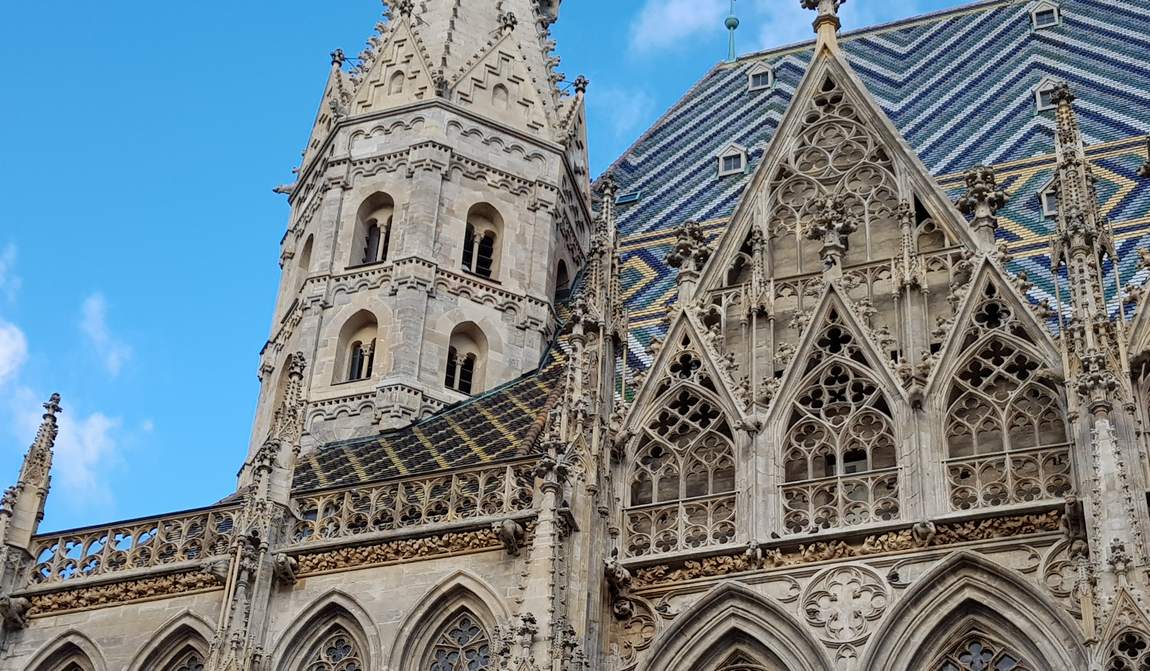
The History of St. Stephan Cathedral
The history of the cathedral is full of drama and mystery. The first stone was laid in 1147 by Margrave Leopold together with Reginmar, Bishop of Passau, and construction took place between 1137 and 1141. St Stephen's Cathedral is named after the first Christian martyr, who was tried by the Sanhedrin and stoned to death for preaching the Gospel in Jerusalem around 33-36 AD.
The Book of Acts contains many stories of his ministry and martyrdom. Stephen is revered in Christianity as a martyr, archdeacon and apostle.
The splendour we see today is the result of the work of architects, builders and artists of the early 16th century.
The temple grew considerably between 1230 and 1245, when it was extended to the west.
The original plan was to build the church in the Romanesque style. The western wall has been preserved to this day, but the portal and the towers are already in Gothic style, as they were rebuilt.
A fire in 1258 almost destroyed Leopold's efforts, but a few years later the church was also rebuilt in the Romanesque style. The inauguration and consecration of the new building took place on 23 April 1263. This day is still the cathedral's most important feast day.
The great construction of Vienna's Gothic cathedral began in 1359 and dragged on for decades. The south tower alone took 100 years to complete. The north tower, begun in 1450, was never completed.
During the reigns of Albert I and later Albert II, a three-nave choir was added. It was at this time that the architecture of the cathedral began to show the distinctive features of Gothic architecture.
The three naves of St Stephen's were dedicated to biblical heroes and church saints. The northern nave was built in honour of the Virgin Mary, the central nave in honour of St Stephen and the southern nave in honour of the Twelve Apostles.
In April 1359, Rudolph IV began the construction of a new church, a model of Gothic architecture. According to the architectural project, the walls of the new church were built on the outside of the old ones, which were to be demolished later (as happened in 1430). However, the craftsmen spared the wide Albertian choir, much to the delight of modern tourists.
In 1433 the south tower of St Stephen's was completed under the direction of the architects M. Knab and P. and H. Prachatitz.
It is remarkable that its foundation is only one and a half metres high. It took the next 30 years to build the vaulted ceilings. Some of the towers were moved and rebuilt several times, but in 1511 they were left alone, never finished.
Until the end of the 15th century, St Stephen's was just a parish church, and only after 1469 did it gain the status of a cathedral.
The cathedral survived the bombing of the Second World War and even the troop retreat of Nazi Germany. Although German artillery general Sepp Dietrich ordered the destruction of the centre of Vienna, the order was never carried out.
Ironically — or rather due to human corruption — the cathedral was badly damaged by arson in 1945 rather than by war. The local looters did not intend to permanently damage their relationship with the Almighty by burning down the cathedral.
They intended to loot nearby shops and then use the fire to cover their tracks. But the next day, the fire spread to the temple. Its roof could not withstand the onslaught and the huge 20-tonne Pummerin bell, cast from Turkish cannons, collapsed.
Unfortunately, the interior was almost completely destroyed and the great organ was burnt out. However, the pulpits and valuable relics survived because they were covered with brick sarcophagi.
Reconstruction was funded by private donations from local residents, but because the project involved volunteers (and did not require a significant financial injection), much of the restoration work is still ongoing.
St Stephen's Cathedral in Vienna was reopened to the public in 1952. It is still active, which means that services are held regularly. Today, anyone can enjoy the splendour of the church on their own or as part of a guided tour.
Concerts are occasionally held there and famous musicians perform. It is worth noting that it is not possible to view the temple during mass, but there is a paid lift to the viewing platform with the huge bell.
Architecture
.jpg)
St Stephen's Cathedral was built in a distinctly Gothic style with elements of Neo-Romanesque architecture.
The main features are the narrow and long window openings, the heavy domed doors and the tall, pointed spires around the outside of the cathedral, which are sometimes referred to by locals as 'our thorn'. Another affectionate nickname for St Stephen's is Steffi.
There are many statues and figures around the building. One of the sculptures depicts St John Capistran, a Franciscan monk who actively campaigned for an attack on Turkey.
As his militant intentions did not meet with the approval of ordinary citizens and rulers, he gathered an army of 60,000 men on his own and set off for Hungary, where he helped to break the Ottoman siege. The ardent Catholic might have achieved more, but he died prematurely of the plague.
The colourful tiled roof is made up of 230,000 tiles in green, black, white and pastel shades. It looks very pretty and even fabulous, resembling a giant gingerbread house.
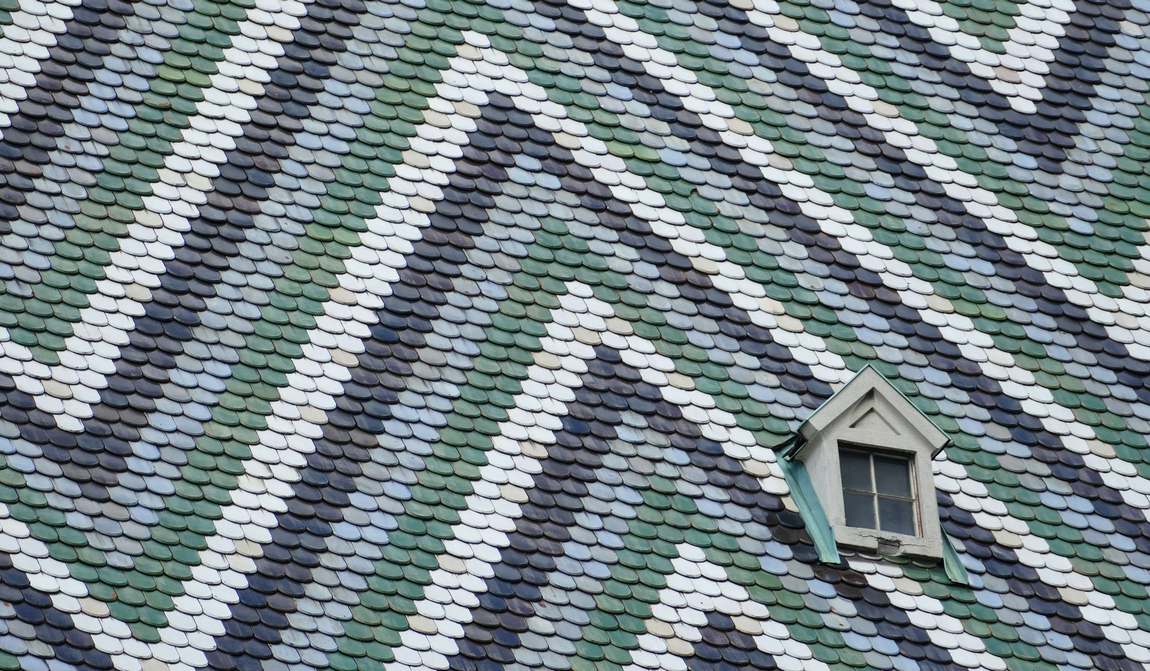
Part of the roof is covered with coloured tiles in a geometric pattern that resembles a holographic pattern. Part of the roof is covered with two coats of arms — Austria and Vienna. On one of them you can see the number 1831 and on the other the number 1950. Strangely enough, they don't represent important historical events, but simply the date when the roofing work was completed.
To prevent the panels from being damaged by the weather, the roof is pitched at 80°. This means that snow and water do not accumulate on the roof, but run off quickly before they can damage the tiles. The roof always looks as good as new, partly because it has undergone continuous restoration since the 1980s.
The Giant's Gate
One of the most important architectural elements of the building is the arched Giant's Gate, built in 1240, which now serves as the main entrance to the church. It is the most important work of late Romanesque art in Austria.
The monumental portal has richly carved ornaments depicting the Last Judgement with Christ supported by angels, the Apostles Mark and Luke, chimeras and demons tempting man, including Satan in the form of a monkey with a noose around his neck.
The pillars of the gate are wrapped in vines (a symbol of communion) and above the entrance is a sculpture of Samson tearing open the mouth of a lion.
On either side of the Giant's Gate are fragments of the three-storey pagan towers that originally formed part of the composition of the doorway. Today they are attached to the main façade. The pagan towers (Heidenturme) are so called because the stone from the ancient Roman temples was used in their construction.
The Bishop's Gate, which serves as a side entrance, is no less magnificent. It has an exquisite portal completed at the beginning of the 14th century. The sculptural compositions depict the coronation of the Virgin and her ascension to heaven. The statues of Albert III and his wife can also be seen in the arch.
Viewing points
The story of St Stephen's Cathedral in Vienna would not be complete without mentioning its two beautiful viewpoints, the North and South Towers.
Construction of the North Tower began in 1450. The author of the project was the architect G. Puxbaum. The master plan was to build a high-strength structure that would give it not only a long life, but almost immortality. The secret of longevity was a recipe for lime quenched with young wine.
.jpg)
Unfortunately, there was not a good grape harvest that year. The drink was too acidic and spoiled the solution. As is often the case today, unsuitable materials were used anyway.
As a result of this carelessness, the foundation soon began to sag and the tower was forgotten for a long 17 years. Work on the tower resumed as soon as the shrinkage of the foundations reached its maximum.
In 1511, however, construction stopped at a height of 68.3 metres and the tower was left unfinished. Decades later, it was decided to complete it with a Renaissance dome.
Today it is jokingly referred to as the "roof of the water tower". Officially, the North Tower is called the Eagle Tower because its construction began during the reign of Emperor Frederick III, who chose the two-headed, feathered bird of prey as his coat of arms.
The North Tower houses the cathedral's most important bell, the new Pummerin. It weighs over 20 tonnes and was cast in 1951.
The cast-iron giant is an exact replica of the collapsed bell cast from Turkish cannons in 1683, which the invaders left near the city walls as they retreated. It rings out to all corners of Vienna only on major holidays, including New Year's Eve.
It is known that the North Tower was never completed, and history is silent as to the real reason for such carelessness. However, there is an interesting legend that goes some way to explaining it.
To begin with, the Habsburgs forbade the construction of anything taller than the South Tower. But the devil had a mind of his own. He made a deal with one of the main builders to defy his orders.
The builder was strangely more afraid of the Habsburgs than of Satan, so he broke the deal. As a result, he fell from the tower to his death.
The North Tower can be reached by lift, while the South Tower can only be reached by stairs, of which there are no less than 343! On the second level of the South Tower is one of the oldest sculptures in the Cathedral, the figure of St Stephen, dating from 1460.
It is worth noting that the South Tower is the highest point of the temple. After climbing several hundred steps, you'll find yourself in a bird's eye view.
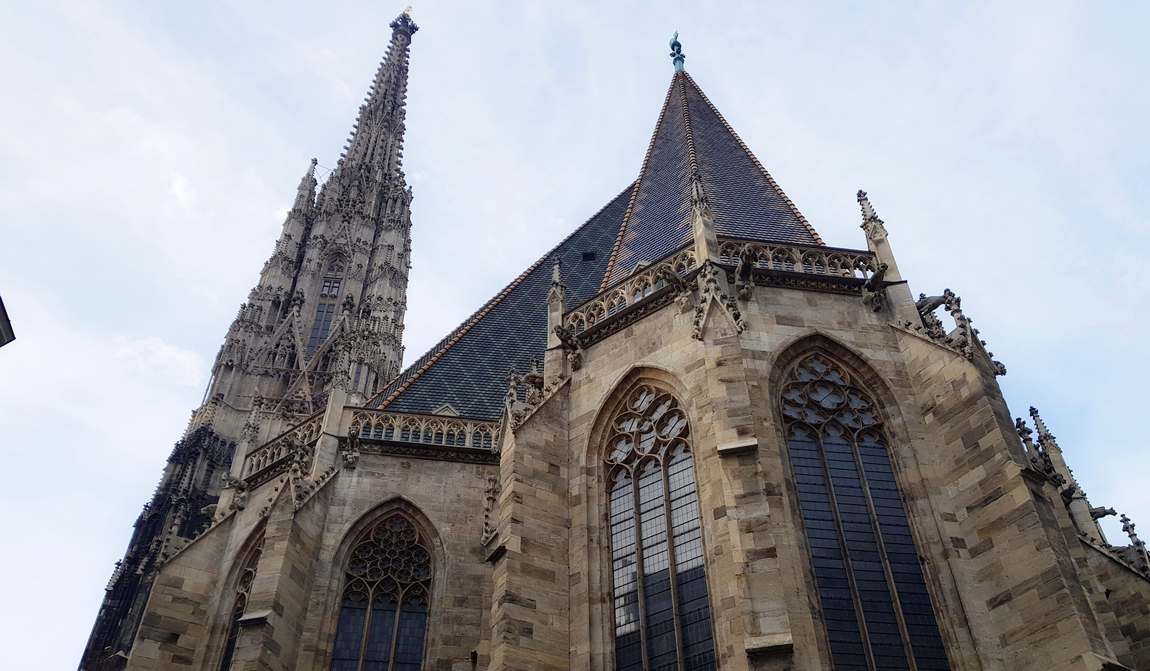
At the top of the southern tower there is a double-headed eagle holding in its clawed paws a heraldic shield with the imperial monogram and the motto of Francis Joseph I, 'Viribus Unitis', which means 'Joining Forces'. Above the mighty eagle is a cross with two crossbeams.
The observation decks of St Stephen's Cathedral offer a breathtaking panorama of Vienna and its surroundings. It's worth braving the climb with your child.
Cathedral interiors
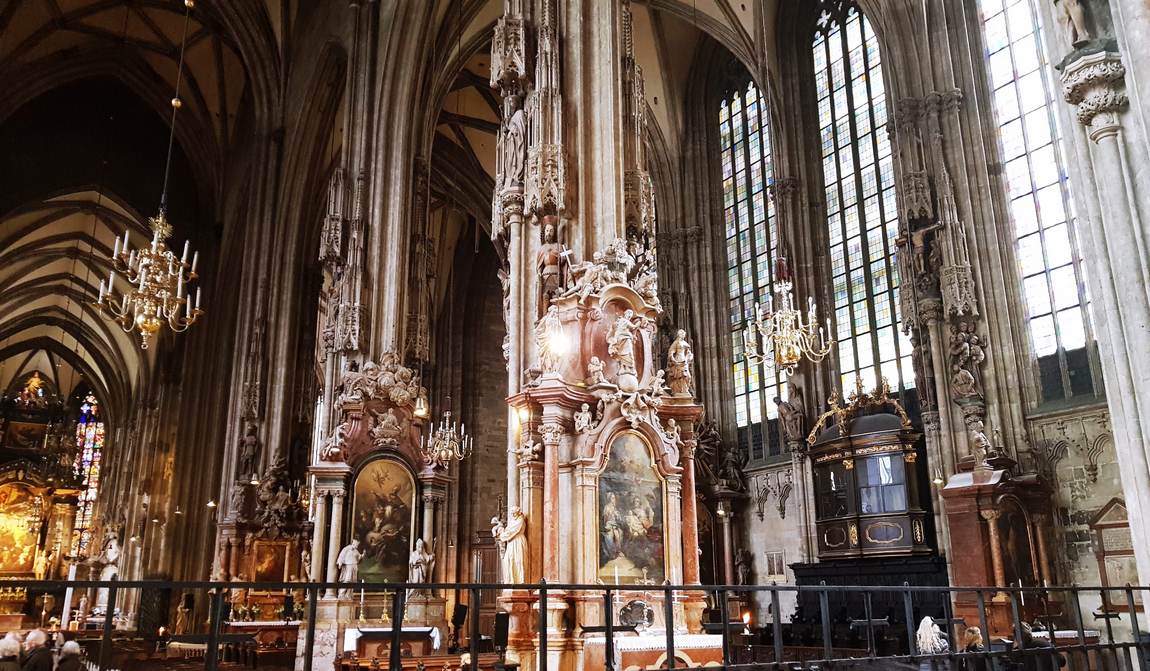
The interior of St Stephen's Cathedral consists of the capitulum, the cenotaph and the altar (the table on which the Eucharist is celebrated). A book could be written about the richness of the Cathedral's interior. We will concentrate on the most striking objects and works of art.
1. Relics and sanctuariesе
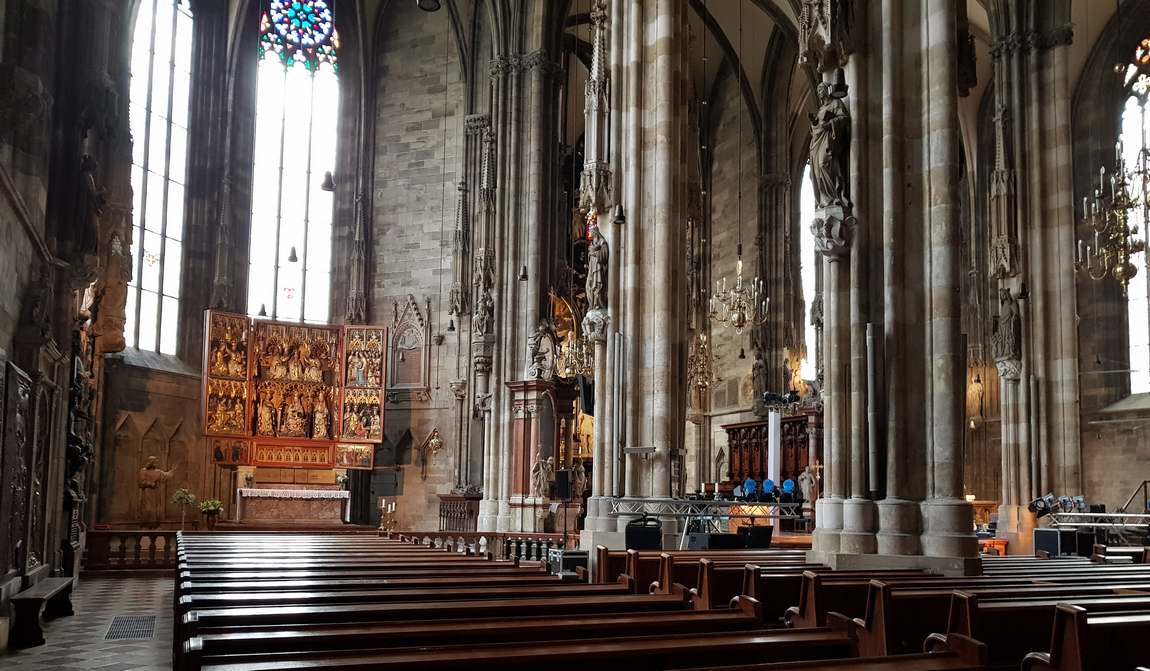
The Maria Pötsch Icon was made in 1676 and is considered to be miraculous. According to legend, tears flowed from Our Lady's eyes for a fortnight during the battle against the Turks at Zenta near the Tisza River in 1697 under the leadership of Eugene of Savoy.
Another relic is the Wiener Neustädter Altar, located at the far end of the women's nave. It was created in 1457, but was not placed in the church until the end of the 19th century. There are 18 altars in total in the cathedral.
The figure of St Christopher stands at the head of the tombstone of Frederick III. It is believed that if a faithful parishioner looks at it, it will prolong his life for a whole year if death has already lurked nearby.
2. The pulpit
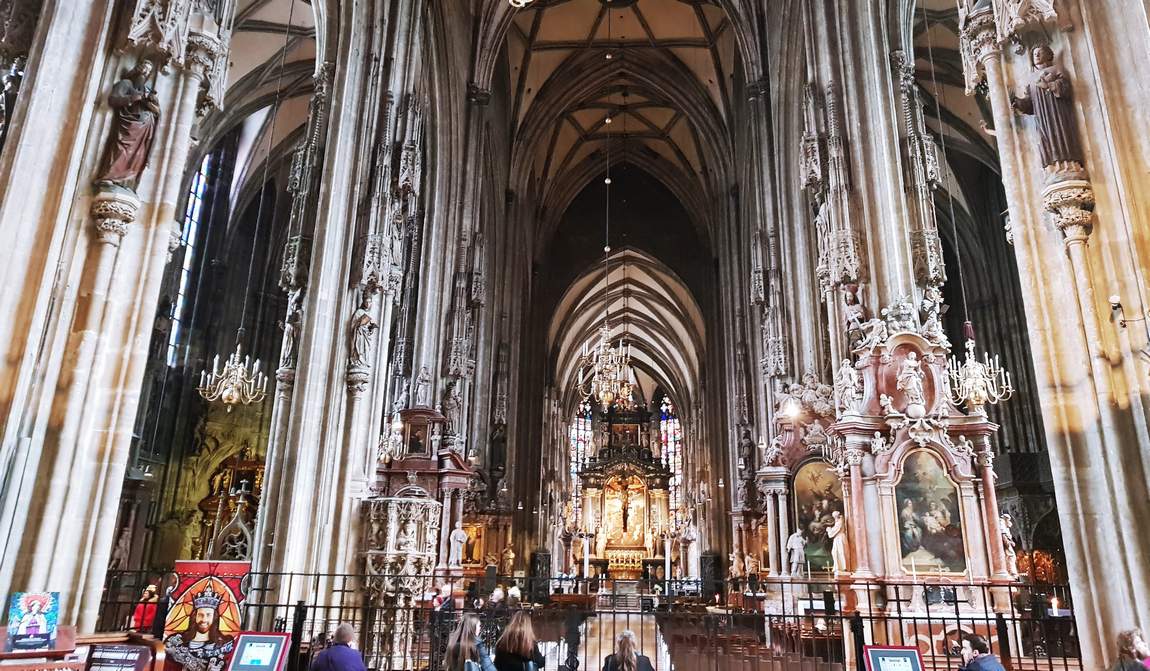
The pulpit is full of high reliefs of religious figures, theologians and philosophers who preached their doctrines in the church. The sculptural portraits of the Fathers of the Church symbolise four types of temperament and four ages.
Saint Ambrose represents youth and the sanguine, Saint Jerome represents old age and the choleric, Saint Gregory the Great represents maturity and the phlegmatic, and Saint Augustine represents youth and the melancholic.
The fifteenth-century railing of the pulpit, made of solid stone, is decorated with marble toads and lizards. The fact that the toads represent evil is taken in stride; why the lizards represent good is openly surprising to many. The mastery of the convex relief was the work of Nikolaus Gerhardt.
3. Organs
St Stephen's Cathedral in Vienna is famous for housing three (!) organs. They are all different sizes and were installed at different times to replace an old instrument that burned down in a fire in 1945. The largest organ in St Stephen's has four keyboards, 125 stops and 10,000 pipes.
4. Tombs
Inside the cathedral are the tombstones of members of the Habsburg dynasty and some other Austrian rulers, whose ashes rest in the corridors under the cathedral.
In the men's nave is the tomb of Emperor Frederick III, made of red Hallein marble and decorated with heraldic symbols. The images on the walls of the sarcophagus show the emperor's good deeds, and the upper part shows the clerics of the monasteries he founded.
In the church there is a cenotaph (a tombstone in a place not containing the remains of the deceased) of Duke Rudolf IV and his wife Catherine (their remains are buried in the catacombs).
Eugene of Savoy and 72 other members of the imperial Habsburg dynasty are buried inside.
5. Sculptures
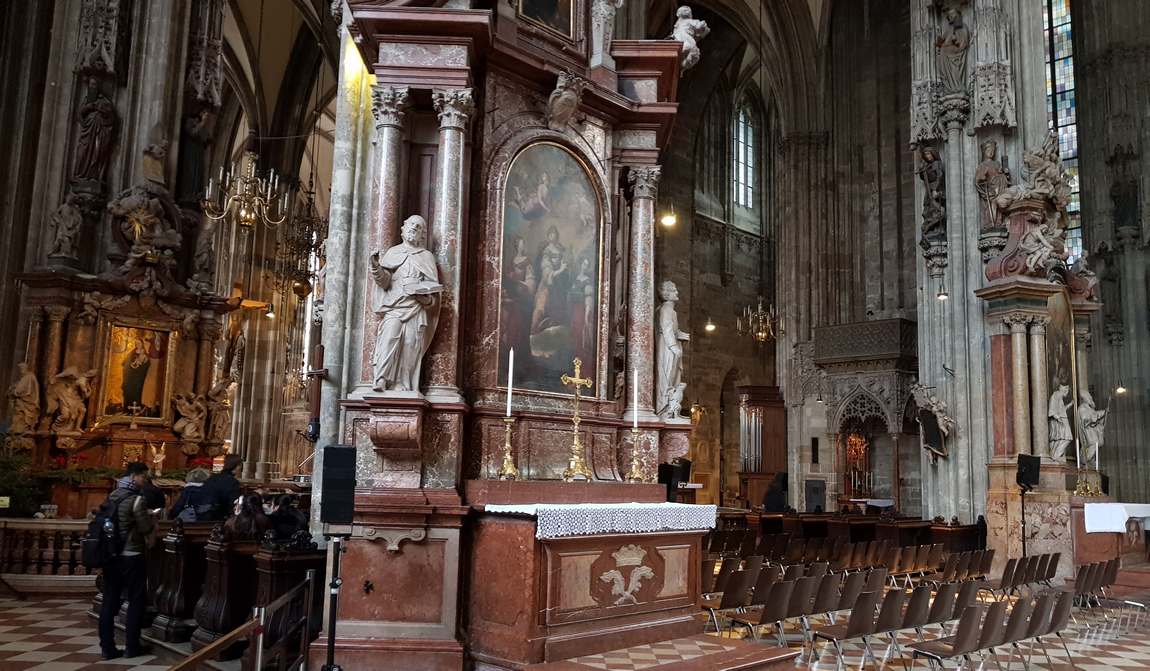
A 1:100 scale bronze model of St Stephen's Cathedral in Vienna is mounted near the south wall of the church. A plaque with an inscription in Braille for the blind is attached to the low plinth.
The figure of St Stephen pulling out a splinter is a replica of an earlier statue created in 1997.
One of the sculptures of the Saviour is called 'Christ with a Toothache' because of the martyr's expression on Jesus' face. Legend has it that some not so pious and sober young men laughed at the sculpture.
The sculptural composition of the Sung south-west portal depicts episodes from the life of the apostle Paul — his travels, baptism and martyrdom. The portal is framed by the figures of the other apostles.
To the right of the Giant's Gate are the statues of Duke Rudolf IV, holding a model of the cathedral, and his servant with the coat of arms, while to the left is the figure of Duchess Catherine, holding a sceptre.
Another large sculpture is the pulpit of San Giovanni Capistran, the place from which the restless Franciscan called for a crusade against the Turks.
Catacombs of St.Stephen’s Cathedral
St Stephen's Cathedral's catacombs, which contain the ashes of royalty, are located on the east side of the crypt. It is a vast network of tunnels, rooms and niches. Not only aristocrats were buried there, but also ordinary citizens when the churchyard became inadequate.
In 1735, an outbreak of the plague in Vienna forced the city's rulers not only to bury the dead under the church, but also to transfer the remains from the cemeteries adjacent to the cathedral.
It was not until 1783 that people began to be buried outside the city, saving the church from becoming a huge burial ground. Today, its underground corridors contain the remains of 11,000 people. Unfortunately, it's not possible to take pictures in the catacombs of St Stephen's Cathedral in Vienna (photography is forbidden), except by stealth.
What’s interesting for children
There are regular guided tours for children in the church. Schoolchildren of all ages are fascinated by the gold and jewelled relics. Older pupils and teenagers can enjoy concerts of cathedral music and evenings dedicated to the works of Vivaldi and Mozart.
Middle and high school students can take a guided tour to learn about the life of the cathedral and its illustrious visitors. A journey through the mysterious underground labyrinths, the catacombs of St Stephen's Cathedral in Vienna, will not leave them indifferent.
Children of all ages will be particularly interested in the images on the walls — measures of weight, length and size that were once used to check the goods bought in the nearby market square.
Interesting facts
Like many other ancient architectural treasures, St Stephen's Cathedral is full of interesting facts.
- St Stephen's is home to tenants who have no intention of paying rent: kestrels, bats and stone martens.
- Beethoven clearly realised that he had gone completely deaf when he saw the birds fluttering from the cathedral's bell tower without hearing a single sound.
- A sundial, which can still be used to tell the time, is attached to the Arkbutan.
- Every year the Austrian government allocates €2.2 million for restoration work.
- There are no souvenir shops in or around St Stephen's Cathedral in Vienna, but Steffi has her own online shop where she can order unique and creative themed gifts for her family and friends.
Tourist tips
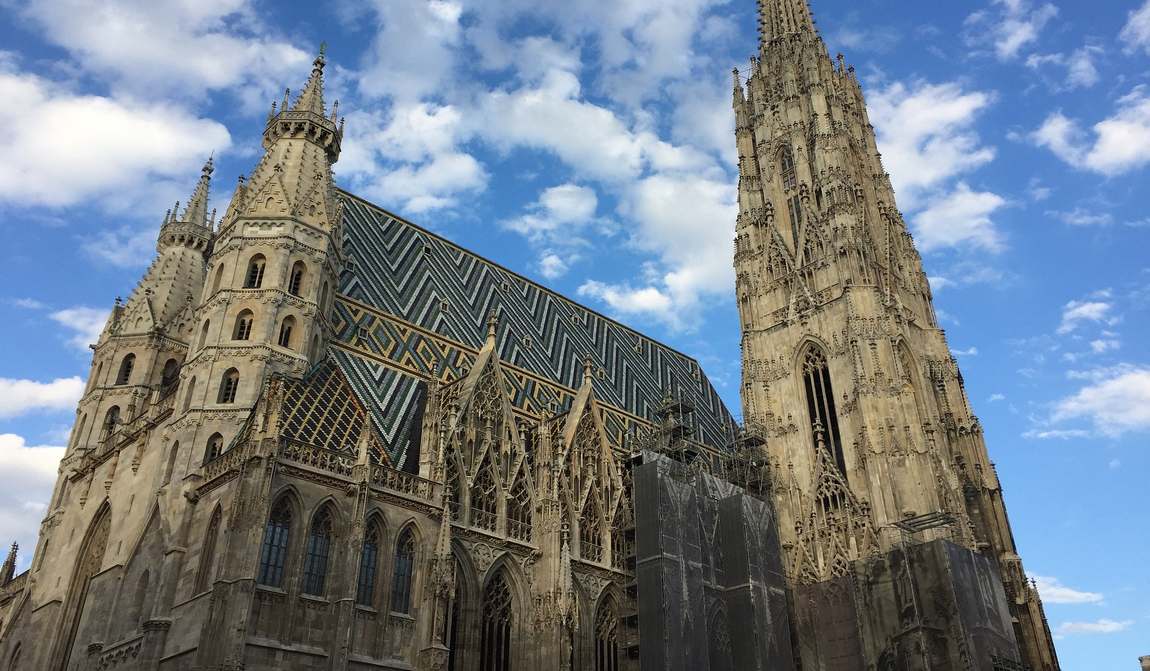
- Audio guides are available in several languages. The information on St Stephen's Cathedral is somewhat limited, but it is quite interesting and touches on the history and interiors of the church.
- It's possible to buy a cheap all-inclusive ticket that gives you access to the catacombs, viewing areas and interiors of St Stephen's. Guided tours are also included.
- To get to the southern viewing platform, you'll have to climb all 343 steps of the spiral staircase. Make sure you have comfortable shoes and judge your own strength.
- Recommended visiting times are 9:00 to 11:30 and 13:00 to 16:40 on weekdays and 13:00 to 16:30 at weekends. These restrictions have been introduced out of respect for the faithful and to maintain a spiritual atmosphere during services.
- To enter St Stephen's Cathedral in Vienna, you must adhere to a certain dress code: shoulders covered, no short shorts or skirts allowed.
- Be sure to visit in the evening, when the lights are spectacular.
The temple is least crowded in the morning, just after it opens. So if you're looking for peace and relative privacy, get there early.


